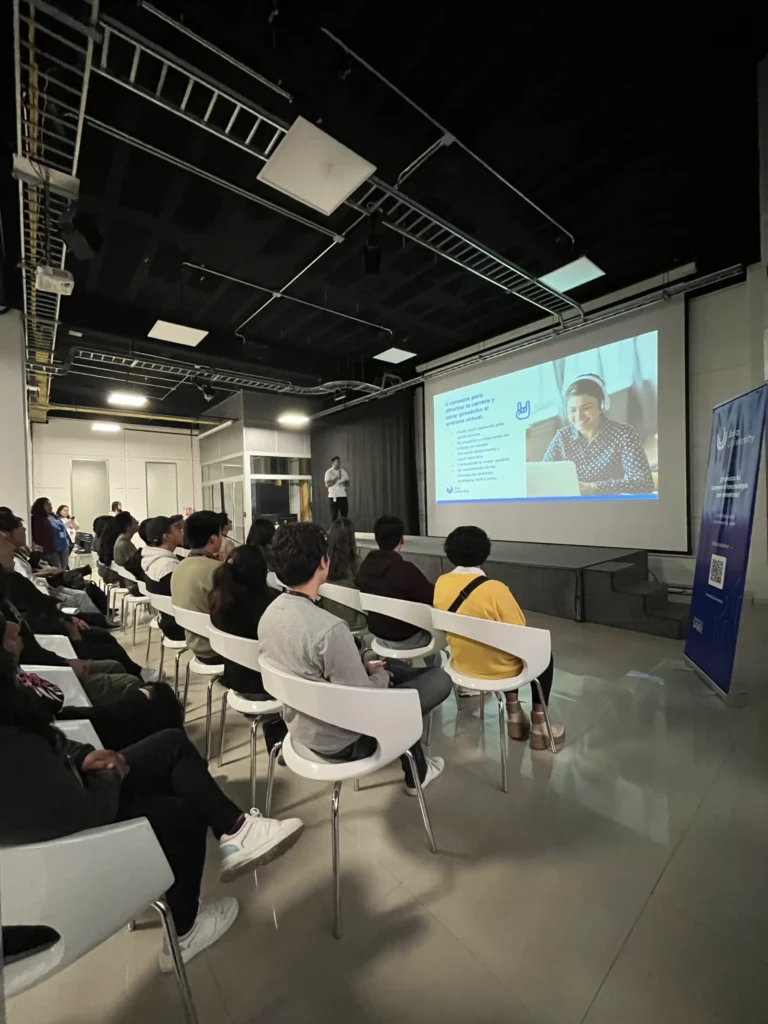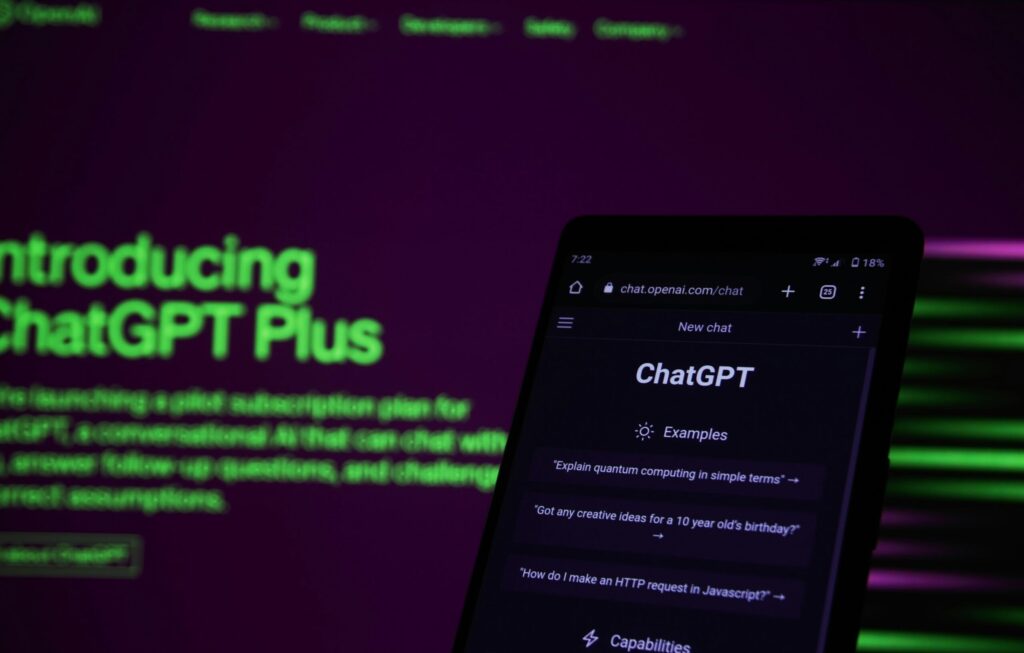How Should We Be Learning in Times of AI? Jala University’s Perspective
By Rolando Lora from the Research and Development team at Jala University
Generative AI has indeed dominated conversations last year, evoking a spectrum of sentiments from skepticism to a mixture of optimism and pessimism. As we reflect on the past year, it becomes evident that the world has witnessed the practical applications and far-reaching effects of Artificial Intelligence in various aspects of our lives.
Amid this technological evolution, one burning question lingers: What does AI mean for education?
AI’s Educational Disruption: Navigating the Chaos
Artificial Intelligence has introduced in a new era of educational possibilities, but it hasn’t come without its fair share of challenges. One major hurdle is the increasing difficulty in distinguishing between content generated by AI and that created by students themselves. The line between what’s genuinely human-generated and what’s AI-crafted has blurred.
Essays, reports, and even creative pieces, once the exclusive domain of students, can now be generated by AI algorithms, making it challenging for educators to evaluate the authenticity of the work submitted.

This has added an element of chaos to classrooms at all levels, leaving both educators and students to grapple with this technological disruption.
In this article, we’ll delve into Jala University’s perspective on the intersection of AI and education. At JalaU, a company deeply committed to education and growth, we have been actively involved in working with, researching, and developing products that leverage this technology. As a result, we have formed our own opinions on the matter. We recognize that while AI brings new challenges, it also offers tremendous opportunities for educational enhancement.
Our approach focuses on using the power of AI to augment the learning experience, empower educators, and equip students with the skills they need to thrive in an AI-driven world.
Understanding Generative AI
Generative AI refers to artificial intelligence systems that can generate new content.
This includes everything from writing text, composing music, to generating realistic images or videos.A significant breakthrough in this field came with the advent of transformer-based architectures and deep learning techniques, which have greatly enhanced the capabilities and efficiency of these AI systems.

When referring solely to text, we use the term Large Language Models or LLMs. For instance, GPT-4 is a large language model. So are the LLaMA models (developed by Meta), Claude-2 (developed by Anthropic), PaLM-2 (developed by Google), Mistral (developed by Mistral AI) and so many others that currently compete for the highest spots in the Chatbot arenas.
They are called large, because their deep learning architecture consists of something that resembles a vast network of neural connections, akin to a simplified model of the human brain. These networks, composed of billions of parameters, are trained with one apparently simple goal: Predict the next token.
The training stage for a competitive LLM is expensive and very challenging. For a good introduction you can check out Andrej Karpathy’s youtube video “Intro to Large Language Models”.
At its core an LLM is:
• A compressed representation of the world, as derived from its training text data.
• A highly effective next token predictor.
These two capabilities make LLMs efficient knowledge retrieval tools. This is true provided the knowledge was present in their learning corpus and was neither diluted nor inconsistent.
Jala’s take on Generative AI
From our position at Jala, with a solid background in software development and education of over two decades, we recognize the critical importance of understanding Generative AI’s impact.
Jala University, a cornerstone in our vision, represents our commitment to those trusting us with their education and to our region. In this light, understanding how Generative AI will reshape both the software industry and the educational landscape becomes not just relevant, but essential for us.

Over the past year (2023) we saw glimpses of the enormous potential that this technology brings to the software development process. Our software engineers learned to embrace the tools and use them responsibly to maximize their productivity. We also experienced many pains and witnessed the frustration of trainers and students when the technology seemed to be turning against us.
So, after a lengthy introduction, and without trying to be too speculative on what the future might bring, we want to share key insights that encapsulate our position on Generative AI.
1. Generative AI is here to stay and students must embrace it proactively.
It is crucial to introduce students to this technology as early as possible, ideally during their first semester. Teaching them not only how to use it effectively but also how to discern between its beneficial and detrimental applications is essential for preparing them for a technology-driven future.
By fostering a deep understanding of Generative AI’s potential and its ethical implications, we empower students to make informed decisions and leverage this tool for positive and innovative purposes in their academic and professional endeavors.
2. We (University) must slightly re-balance our student outcomes towards human-centric (people) skills.
Over the past 20 years, our educational journey has been marked by a shift away from traditional models focused on memorization and repetition, towards nurturing critical thinking and problem-solving abilities.
As we walk (or run) towards a world where Generative AI complements our abilities on a daily basis, knowledge skills will be less relevant, and human-centric skills will be significantly more important.
We’re already very aligned with this path, but we must double our efforts so that our students can maximize their skills in critical thinking, collaboration, communication, resilience, problem solving, creativity, emotional intelligence and the pursue of lifelong learning.
Paradoxically, Generative AI can help us or play against.

3. Leverage Generative AI tools towards the accomplishment of our student outcomes.
Concretely:
a. Explore and implement personalized learning using AI Tutors that can complement the learning experience in our courses while adapting to each student’s strengths, weaknesses, interests, and learning styles.
b. Explore and implement highly efficient real-time language translation supportreducing the communication gap that sometimes we encounter across English, Spanish and Portuguese native speakers.
c. Explore and implement automated AI feedback systems.
d. Ensure that the technology is accessible and available to students and educators.
4. Continuous Reevaluation and Adaptation.
Regularly revisit and reassess our educational strategies to ensure they remain aligned with the latest developments in Generative AI. This involves adapting our curriculum, teaching methodologies, and tools to stay at the forefront of AI-driven educational practices
Conclusion
Our commitment to education and to our region is stronger than ever. Our journey with Generative AI is just beginning, and we anticipate further integrating these technologies to enhance learning and research. Together, we step into a new era of education at Jala University, ready to innovate and lead in an AI-augmented world.
This article was enhanced with insights and proofreading assistance from frontier AI models, including OpenAI’s GPT-4 and Anthropic’s Claude-2 100K.
Discover more articles of your interest! Go back

